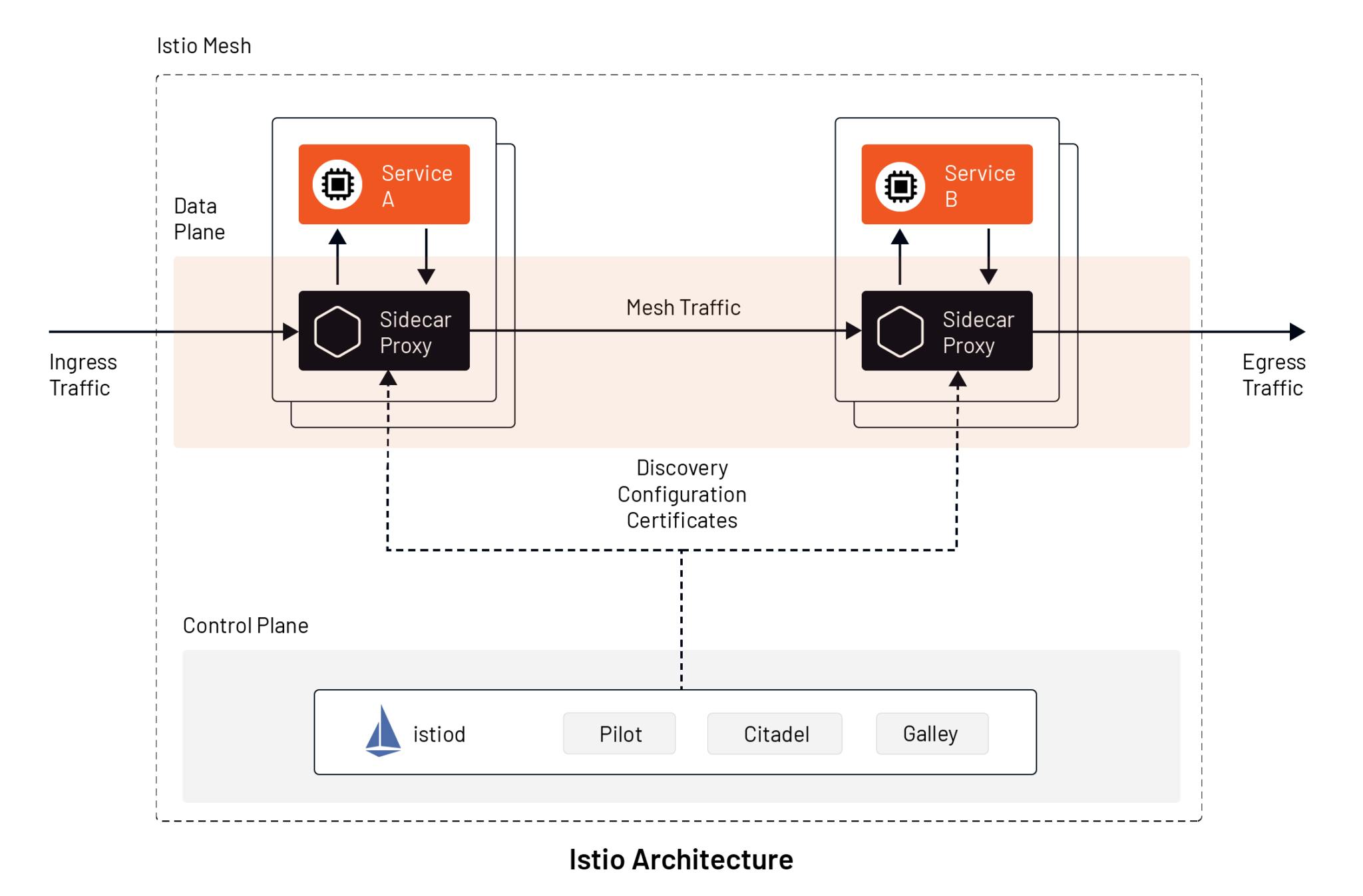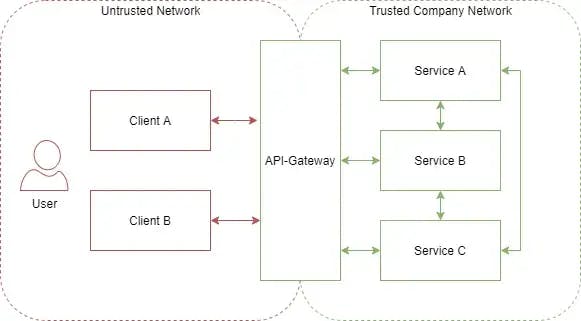Getting started with Istio
Table of contents
Istio is an open-source platform for managing and securing microservices. It provides a set of APIs and tools that can be integrated with any logging, telemetry, or policy system, and it can be deployed in a variety of environments, including on-premises, in the cloud, and in Kubernetes containers. Istio allows developers to control how microservices share data with one another, and to easily monitor and manage the security of their applications.
Istio's architecture consists of two main components: the data plane and the control plane. The data plane is responsible for routing network traffic between microservices, and it is implemented using a mesh of sidecar proxies that are deployed alongside each microservice. These proxies intercept network communication and route requests to and from other proxies in the mesh. The control plane, on the other hand, manages and configures these proxies to route traffic, enforce policies, and collect telemetry. Together, the data plane and the control plane provide a powerful framework for managing and securing microservice-based applications.

The main features of Istio are Traffic management, Security & Observability.
Concept of Zero trust
In simple zero trust means TRUST NO ONE. The zero-trust model is based on the assumption that networks and infrastructure may be infiltrated by malicious or faulty code. For example, Instead of assuming that services running on a Kubernetes cluster can be trusted without question, this approach assumes that they should be treated with skepticism and subjected to strict access controls.

In this example, the left side of the network, where users and clients reside, is considered untrusted because access to this network does not require authentication or authorization. On the other hand, the right side of the network is considered trusted because it is protected by an API gateway, which acts as a bouncer for the network.
Istio provides a powerful framework for implementing zero trust in microservice-based applications.
Istio metrics
Istio provides a number of metrics out of the box, including request counts, request success rates, and latencies. These metrics are collected at various points in the request/response flow, such as at the ingress gateway, at the service itself, and at the egress gateway. By analyzing these metrics, you can get a detailed view of how your services are interacting with each other and the external world.
In addition to the built-in metrics, Istio also allows you to define custom metrics based on HTTP headers, request parameters, and other data. This can be useful for tracking specific business metrics or for gathering more granular data about your application.
To access Istio metrics, you can use the Istio dashboard or the Prometheus time-series database. The Istio dashboard provides a graphical interface for exploring and visualizing metrics, while Prometheus allows you to query and manipulate the data using a powerful query language.
Another way to get insights from Istio metrics is through the use of service mesh dashboards and visualizations. These tools allow you to see how your services are interacting in real-time and identify potential issues before they become problems.
In summary, Istio metrics is an essential tool for monitoring and optimizing the performance of your microservices application. Whether you are using the built-in metrics or defining custom ones, Istio provides a wealth of data that can help you understand and improve the behavior of your services.
Istio observability
One of the main benefits of Istio's observability features is that they allow you to understand how your services are interacting with each other and the external world. This can be useful for identifying bottlenecks or problematic services, as well as for understanding the overall health of your application.
Istio provides a number of ways to access observability data, including the Istio dashboard, the Prometheus time-series database, and the Kiali observability console. These tools allow you to visualize and analyze metrics, traces, and logs, providing insights into the behavior of your application.
In addition to the built-in observability features, Istio also allows you to integrate with external observability tools such as Grafana, Elasticsearch, and Splunk. This can give you even more flexibility and power in terms of analyzing and understanding the behavior of your application.
In summary, Istio's observability features are an essential tool for monitoring and optimizing the performance of your microservices application. Whether you are using the built-in tools or integrating with external ones, Istio provides a wealth of data that can help you understand and improve the behavior of your services.